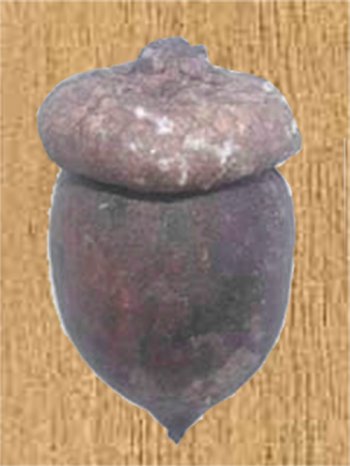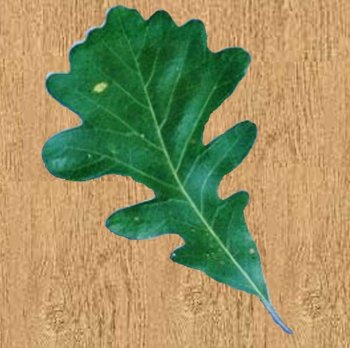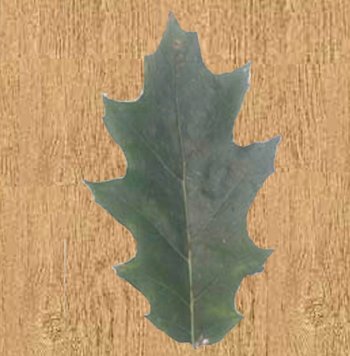

Acorn

Chogan and Kanti finally got the best of Ahanu and Tarragon, but now they are confined to collecting, shelling, and soaking acorns. Perhaps it's time we learn how Native Americans properly prepared acorns for eating. Blue jays, squirrels, and deer can eat raw acorns without problems, but without proper preparation acorns can make people sick. Sounds scary, doesn't it. Were you aware improperly cooked pork can cause parasitic infections? And improperly pasteurized milk can cause tuberculosis? That can also be scary. It is important for our health that we know how to properly process all our food.
Try tasting a raw acorn and you will discover a very bitter and unpleasant flavor. This is caused by tannic acid. Not only is tannic acid unpleasant to the taste, it can make you sick. Fortunately, tannic acid is water soluble and soaking the shelled acorns in several changes of water flushes away the tannic acid. Chogan and Kanti removed tannic acid from their shelled acorns by placing the acorns in a woven basket . Then they placed the basket in the river with a rock on the lid, so the river wouldn't wash away the basket. Water flowing through the porous basket removed the tannic acid and made the acorns edible. Those early Native Americans were pretty clever.
White Oak Leaf

Not all acorns are created equal. Acorns from a group of trees called white oaks have far less tannic acid than the red oak group, making their acorns the best choice for food. Given an option, even deer prefer white oak acorns. Oak trees that fall in the white oak group include: white oak, bur oak, and post oak as well as many others. The flowers of the white oaks bloom in the spring and become ripe acorns by the end of the summer. The leaves of the white oak have rounded lobes like the bur oak leaf seen at the right.
Red Oak Leaf

Oak trees falling into the red oak group include: red oak, pin oak, black oak, and many others. Their acorns do not ripen until the second year. Some people feel this longer maturation time is why they accumulate so much tannic acid. Unlike the white oak trees, red oak leaves have pointed lobes similar to the red oak leaf at the left.
Acorn Cookies
Grandpappy’s Acorn Cookie Recipe
Courtesy of Robert Wayne Atkins
2 cups wheat flour 1 cup acorn grits
1 cup brown sugar ½ cup shortening
1 tsp. baking powder 1 tsp. salt
Preparation: Combine the flour, baking powder, and salt. In a large bowl, cream the shortening and the sugar. Gradually blend in the dry ingredients. Then blend in the acorn grits. Pinch off walnut sized pieces of dough and roll into balls. Place 1.5" apart on a lightly greased baking sheet.
Cook: Bake at 350°F for 10 to 12 minutes or until lightly colored. Transfer to a wire rack to cool.
Warning: Always use caution when eating new or exotic foods, as some foods can cause allergic reactions. For those of you who wish to sample acorn’s natural bounty, Robert Wayne Atkins (Grandpappy) has an excellent web site that offers additional recipes as well as more detailed instructions on acorn preparation.